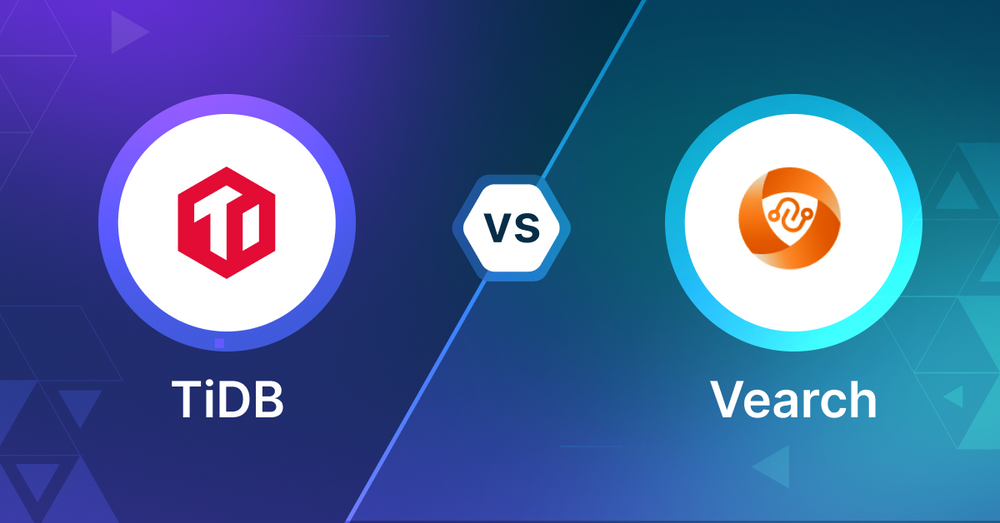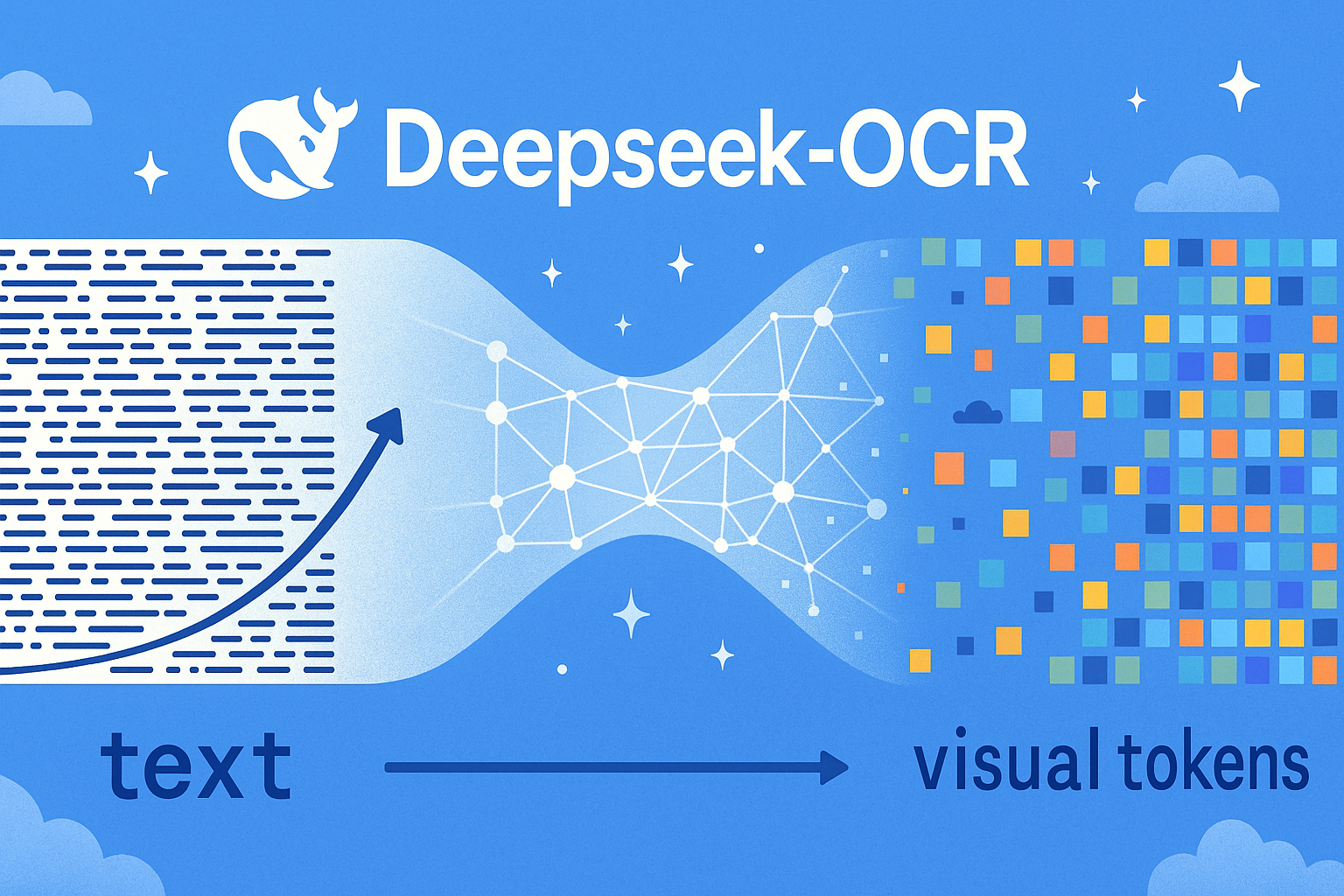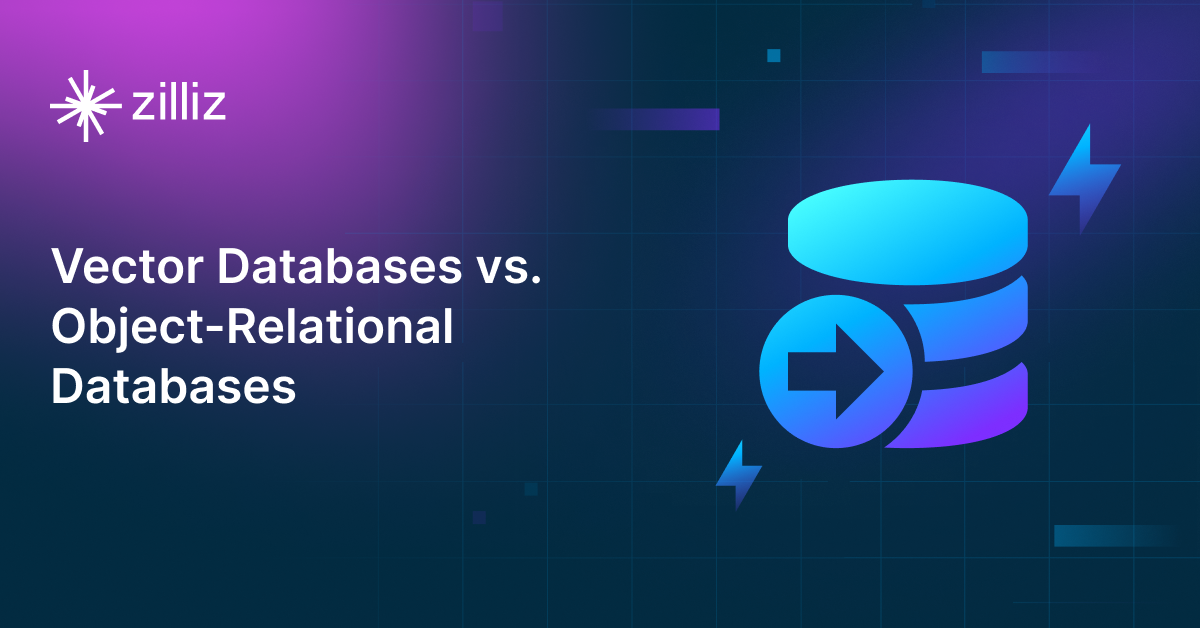TiDB vs Vearch Choosing the Right Vector Database for Your AI Apps

What is a Vector Database?
Before we compare TiDB and Vearch, let's first explore the concept of vector databases.
A vector database is specifically designed to store and query high-dimensional vectors, which are numerical representations of unstructured data. These vectors encode complex information, such as the semantic meaning of text, the visual features of images, or product attributes. By enabling efficient similarity searches, vector databases play a pivotal role in AI applications, allowing for more advanced data analysis and retrieval.
Common use cases for vector databases include e-commerce product recommendations, content discovery platforms, anomaly detection in cybersecurity, medical image analysis, and natural language processing (NLP) tasks. They also play a crucial role in Retrieval Augmented Generation (RAG), a technique that enhances the performance of large language models (LLMs) by providing external knowledge to reduce issues like AI hallucinations.
There are many types of vector databases available in the market, including:
- Purpose-built vector databases such as Milvus, Zilliz Cloud (fully managed Milvus)
- Vector search libraries such as Faiss and Annoy.
- Lightweight vector databases such as Chroma and Milvus Lite.
- Traditional databases with vector search add-ons capable of performing small-scale vector searches.
TiDB is a traditional database with vector search as an add-on and Vearch is a vector database. This post compares their vector search capabilities.
TiDB: Overview and Core Technology
TiDB, developed by PingCAP, is an open-source, distributed SQL database that offers hybrid transactional and analytical processing (HTAP) capabilities. It is MySQL-compatible, making it easy to adopt for teams already familiar with the MySQL ecosystem. TiDB's distributed SQL architecture provides horizontal scalability like NoSQL databases while retaining the relational model of SQL databases, making it highly flexible for handling both transactional and analytical workloads.
One of TiDB's core strengths is its HTAP architecture, which allows it to process transactional (OLTP) and analytical (OLAP) workloads in a single database, reducing the need for separate systems. Additionally, TiDB's MySQL compatibility makes it easy to integrate into existing environments that rely on MySQL without significant changes to the application code. The database also features auto-sharding, automatically distributing data across nodes to improve read and write performance while maintaining strong consistency.
TiDB supports vector search through integration with external libraries and plugins, enabling efficient management and querying of vectorized data. This feature, combined with TiDB's HTAP architecture, makes it a versatile option for businesses needing vector search capabilities alongside transactional and analytical workloads. The distributed architecture of TiDB allows it to handle large-scale vector queries once the necessary configurations are in place.
While including vector search functionalities in TiDB requires additional configuration, the system's SQL compatibility allows developers to combine vector search with traditional relational queries. This flexibility makes TiDB suitable for complex applications that require both vector search and relational database capabilities, offering a comprehensive solution for diverse data management needs.
What is Vearch? Overview and Core Technology
Vearch is a tool for developers building AI applications that need fast and efficient similarity searches. It’s like a supercharged database, but instead of storing regular data, it’s built to handle those tricky vector embeddings that power a lot of modern AI tech.
One of the coolest things about Vearch is its hybrid search. You can search by vectors (think finding similar images or text) and also filter by regular data like numbers or text. So you can do complex searches like “find products like this one, but only in the electronics category and under $500”. It’s fast too - we’re talking searching on a corpus of millions of vectors in milliseconds.
Vearch is designed to grow with your needs. It uses a cluster setup, like a team of computers working together. You have different types of nodes (master, router and partition server) that handle different jobs, from managing metadata to storing and computing data. This allows Vearch to scale out and be reliable as your data grows. You can add more machines to handle more data or traffic without breaking a sweat.
For developers, Vearch has some nice features that make life easier. You can add data to your index in real-time so your search results are always up-to-date. It supports multiple vector fields in a single document which is handy for complex data. There’s also a Python SDK for quick development and testing. Vearch is flexible with indexing methods (IVFPQ and HNSW) and supports both CPU and GPU versions so you can optimise for your specific hardware and use case. Whether you’re building a recommendation system, similar image search or any AI app that needs fast similarity matching, Vearch gives you the tools to make it happen efficiently.
Key Differences
Search Performance and Methodology
TiDB uses SQL with vector search capabilities through plugins, so it’s familiar but requires extra setup. HTAP architecture handles transactional and analytical workloads in one system.
Vearch uses specialized vector indexing methods (IVFPQ and HNSW) for similarity search. It can process millions of vectors in milliseconds and supports hybrid search combining vector similarity with traditional filtering.
Data Management
TiDB is good at structured data with its MySQL compatible system. It auto-shards data across nodes and ACID compliance. Vector data requires extra configuration.
Vearch handles vector embeddings natively and supports multiple vector fields per document. It allows real-time updates and combines vector data with regular metadata.
Scalability
TiDB scales horizontally through auto-sharding, all data (regular and vector) is distributed across nodes. It keeps strong consistency during scaling.
Vearch uses a distributed architecture with specialized nodes (master, router, partition server) for different functions. It supports both CPU and GPU deployment.
Integration
TiDB fits into MySQL ecosystem and supports standard SQL tools and frameworks. Vector search requires external libraries.
Vearch provides Python SDK and REST API for direct integration. It works well with AI applications but may require custom integration for traditional database operations.
Setup and Maintenance
TiDB requires MySQL knowledge but follows familiar database patterns. Vector search setup requires extra expertise.
Vearch is focused on vector search use cases with simple setup for those use cases. It includes cluster health monitoring tools.
Cost
TiDB may consume more resources because it’s a full database. Consider costs for both regular database and vector search.
Vearch optimizes specifically for vector operations, potentially requiring fewer resources for pure vector search workloads.
When to Choose Each
Choose TiDB when you need a hybrid solution that can handle both traditional database operations and vector search. It’s perfect for companies already using MySQL who want to add vector search while keeping ACID compliance, or for applications that need complex SQL queries alongside vector similarity search. TiDB is good for use cases like e-commerce platforms that combine transactional data with recommendation systems, or financial services that need both analytical processing and similarity matching.
Choose Vearch when your main focus is on vector similarity search performance and scalability. It’s better for AI-focused applications that need fast vector operations, like image similarity search engines, recommendation systems or natural language processing applications. Vearch is suitable for cases where you need real-time vector search updates and don’t need complex SQL operations.
Summary
TiDB and Vearch are for different purposes: TiDB is a distributed SQL database with vector search, Vearch is for high-performance vector similarity search. Choose one according to your needs - TiDB if you need full database features with vector search, Vearch if you need vector similarity search with minimal database operations.
Read this to get an overview of TiDB and Vearch but to evaluate these you need to evaluate based on your use case. One tool that can help with that is VectorDBBench, an open-source benchmarking tool for vector database comparison. In the end, thorough benchmarking with your own datasets and query patterns will be key to making a decision between these two powerful but different approaches to vector search in distributed database systems.
Using Open-source VectorDBBench to Evaluate and Compare Vector Databases on Your Own
VectorDBBench is an open-source benchmarking tool for users who need high-performance data storage and retrieval systems, especially vector databases. This tool allows users to test and compare different vector database systems like Milvus and Zilliz Cloud (the managed Milvus) using their own datasets and find the one that fits their use cases. With VectorDBBench, users can make decisions based on actual vector database performance rather than marketing claims or hearsay.
VectorDBBench is written in Python and licensed under the MIT open-source license, meaning anyone can freely use, modify, and distribute it. The tool is actively maintained by a community of developers committed to improving its features and performance.
Download VectorDBBench from its GitHub repository to reproduce our benchmark results or obtain performance results on your own datasets.
Take a quick look at the performance of mainstream vector databases on the VectorDBBench Leaderboard.
Read the following blogs to learn more about vector database evaluation.
Further Resources about VectorDB, GenAI, and ML
- What is a Vector Database?
- TiDB: Overview and Core Technology
- What is Vearch**? Overview and Core Technology**
- Key Differences
- When to Choose Each
- Summary
- Using Open-source VectorDBBench to Evaluate and Compare Vector Databases on Your Own
- Further Resources about VectorDB, GenAI, and ML
Content
Start Free, Scale Easily
Try the fully-managed vector database built for your GenAI applications.
Try Zilliz Cloud for FreeKeep Reading

DeepSeek-OCR Explained: Optical Compression for Scalable Long-Context and RAG Systems
Discover how DeepSeek-OCR uses visual tokens and Contexts Optical Compression to boost long-context LLM efficiency and reshape RAG performance.

Why Context Engineering Is Becoming the Full Stack of AI Agents
Context engineering integrates knowledge, tools, and reasoning into AI agents—making them smarter, faster, and production-ready with Milvus.

Vector Databases vs. Object-Relational Databases
Use a vector database for AI-powered similarity search; use an object-relational database for complex data modeling with both relational integrity and object-oriented features.
The Definitive Guide to Choosing a Vector Database
Overwhelmed by all the options? Learn key features to look for & how to evaluate with your own data. Choose with confidence.